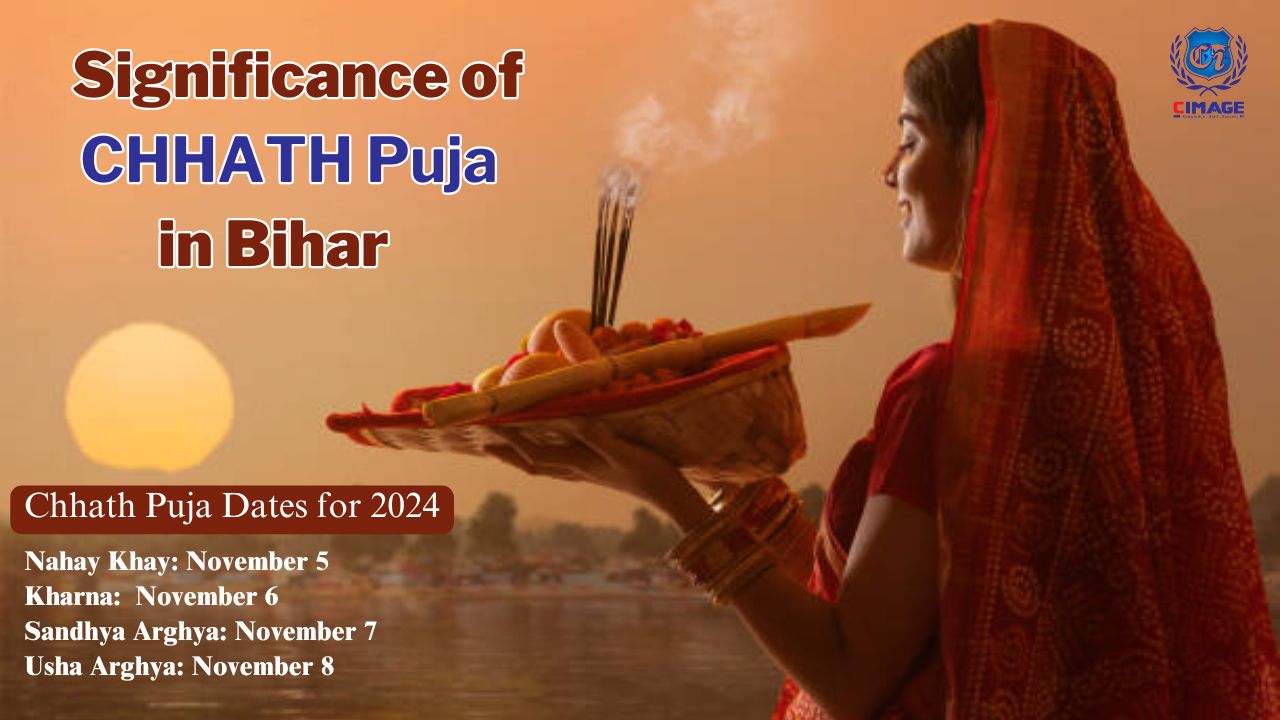
The Significance of Chhath Puja in Bihar: A Festival of Faith, Devotion, and Togetherness
Chhath Puja is one of the most significant and eagerly awaited festivals in Bihar, celebrated with deep faith, meticulous rituals, and a profound connection to nature. Dedicated to worshiping the Sun God (Surya) and his consort, Chhathi Maiya, this ancient festival seeks blessings for health, prosperity, and harmony. While the roots of Chhath Puja are deeply embedded in the rural landscapes of Bihar, it has expanded far beyond, celebrated by devotees across India and abroad.
For many students who leave their hometowns to pursue College Degrees in cities, Chhath Puja becomes a much-awaited festival to return home. Whether they are enrolled in courses like BCA, BBA, MBA, or MCA, they make special plans to celebrate the festival joyfully with family, often taking time off from studies to participate in this cherished tradition.
Understanding Chhath Puja’s Rituals and Their Symbolism
The essence of Chhath Puja lies in expressing gratitude and reverence for the Sun God, who is believed to bestow life, vitality, and health. As a festival closely linked to nature, it emphasizes purity, simplicity, and sustainability. Let’s explore the four-day ritual of Chhath Puja and its symbolic significance:
1.Nahay Khay: The first day marks the beginning of Chhath Puja, when devotees take a holy bath in the river or local water bodies to purify themselves. They prepare a simple, sattvic meal, usually made from gourd, rice, and lentils, which symbolizes the beginning of the purification process.
2.Kharna: The second day involves a full-day fast, broken only in the evening after offering prayers. A meal made of rice kheer (pudding), chapati, and fruits is prepared and shared with neighbors and friends. This is often a special gathering time for families, when children, young adults, and the elderly come together to enjoy a meal and pray together.
3.Sandhya Arghya (Evening Offering): On the third day, devotees observe a rigorous 36-hour fast without food or water. The main ritual, "Sandhya Arghya," is performed at sunset, when devotees gather along riverbanks to make offerings to the setting sun. Devotees carry fruits, sweets, and the traditional "Thekua" (a sweet made from wheat flour and jaggery) in beautifully decorated baskets. The serene atmosphere, the chanting of prayers, and the offering of "arghya" to the Sun God create a mesmerizing and spiritually charged environment.
4.Usha Arghya (Morning Offering): On the final day, devotees offer "Usha Arghya" to the rising sun, marking the conclusion of Chhath Puja. This ritual is a moment of thanksgiving, as devotees pray for well-being, prosperity, and happiness for their loved ones. After offering prayers, devotees break their fast with the blessed offerings or "prasad."
Chhath Puja Dates for 2024
- Nahay Khay: Tuesday, November 5
- Kharna: Wednesday, November 6
- Sandhya Arghya: Thursday, November 7
- Usha Arghya: Friday, November 8
These dates signify the journey of the devotees’ deep spiritual preparation, culminating in the heartfelt worship of the Sun God.
The Cultural Importance of Chhath Puja in Bihar
Chhath Puja transcends religious and regional boundaries, fostering a strong sense of unity and togetherness among communities. It connects people back to their cultural roots and instills values of humility, self-discipline, and reverence for nature.
This festival also encourages environmental stewardship, as devotees use natural and eco-friendly materials for offerings. Many communities clean riverbanks and ensure that the surroundings are pristine, honoring the elements that support life.
For students pursuing higher education away from home, Chhath Puja holds special significance. It becomes a time to reconnect with family and immerse themselves in the values and traditions they grew up with. Despite the pressures of studies, assignments, and projects, students from Bihar often return home, taking part in the rituals and rejoicing with family and neighbors. This homecoming is both a break from their hectic routines and an emotional reunion with the values and rituals they cherish.
Chhath Puja: A Festival of Sustainability and Resilience
The beauty of Chhath Puja lies in its simplicity and sustainable practices. Offerings are made with locally sourced fruits, homemade sweets, and flowers, underscoring the festival’s eco-friendly ethos. The tradition of using biodegradable materials for offerings and avoiding any synthetic elements emphasizes respect for nature, reinforcing an awareness of environmental protection.
Conclusion
Chhath Puja stands as a remarkable celebration of faith, resilience, and cultural pride in Bihar. It exemplifies how ancient rituals continue to enrich modern lives, offering moments of reflection, gratitude, and togetherness. For students studying away from their hometowns, Chhath Puja is more than just a festival; it’s a chance to reconnect with family, community, and a shared cultural heritage. As Bihar’s riversides light up with devotion each year, Chhath Puja remains a cherished reminder of unity, simplicity, and the power of faith in the everyday lives of its people.














